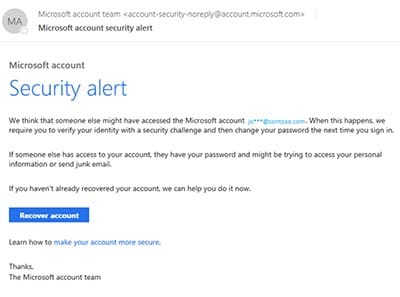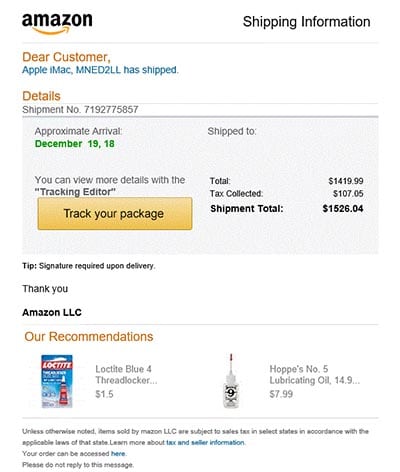6 Phishing Email Examples in 2021
Phishing attacks have long been one of the top methods crooks use to trick victims into compromising their security. But as 2020 progressed and we gratefully welcomed in 2021, phishing scams have surged.
And while much of that surge has been because of an increase of SMS based phishing scams, phishing emails have also been on the rise as well. Basically, it’s not good news with the phishing side of things.
According to researchers, Microsoft, Apple, Amazon, DHL, WeTransfer, PayPal and the NHS (thanks, pandemic) have been among the brands most prolifically used in these email scams.
Quick – what’s a phishing email scam?
It’s an email sent by crooks pretending to be someone they’re not. Usually they pretend to be a well-known entity like Microsoft. Under this disguise, they try and trick an email recipient into giving up sensitive information or downloading harmful files. Usually this means luring the recipient into clicking a link that opens up a spoof website, which steals any data entered into it.
So let’s look at some trending phishing email examples in 2021.
Phishing Email Examples
Microsoft Phishing Email Example
Microsoft and its corresponding products (including Outlook) are one of the most frequent targets of phishing scams. After all, the vast majority of people use at least one of their products, be it Outlook (Hotmail), Windows, Office, OneDrive or something else.
This phishing email uses a common ploy. The claim that the recipient’s account, in this case their Microsoft account needed to access most Microsoft products, has been compromised and the recipient needs to click a link to rectify the issue.

Apple Phishing Email Example
It’s not surprising that Apple themed phishing scams are just as popular as their Microsoft counterparts. Lots of people use Apple owned products including iPads, iPods, Macs, iPhones and their corresponding iCloud accounts as well as the iTunes store.
Again the ploy is similar to the Microsoft phishing email example above. The phishing email claims the recipient has been locked out of their iCloud account for security reasons, and the recipient needs to click a link to rectify the problem.

Sponsored Content. Continued below...
Amazon Phishing Email Example
The Internet’s largest retailer will have no shortage of scams directed as its customers. Like the above examples, these can claim there is something wrong with the customer’s account and they need to click a link to sort it out. However the scam below simply alarms the recipient by sending them a product’s shipping information on an order the recipient apparently ordered. Of course the recipient would have ordered no such item and will click the link to investigate, and is then directed to a spoof Amazon website.

Click the link below to go to the next four examples.
Keep up-to-date with all the latest cybersecurity threats and our tips to stay safe online. Follow us on Facebook, Instagram and Twitter.
Continued below...
Thanks for reading! But before you go… as part of our latest series of articles on how to earn a little extra cash using the Internet (without getting scammed) we have been looking into how you can earn gift vouchers (like Amazon vouchers) using reward-per-action websites such as SwagBucks. If you are interested we even have our own sign-up code to get you started. Want to learn more? We discuss it here. (Or you can just sign-up here and use code Nonsense70SB when registering.)
Become a Facebook Supporter. For 0.99p (~$1.30) a month you can become a Facebook fan, meaning you get an optional Supporter Badge when you comment on our Facebook posts, as well as discounts on our merchandise. You can subscribe here (cancel anytime.)

